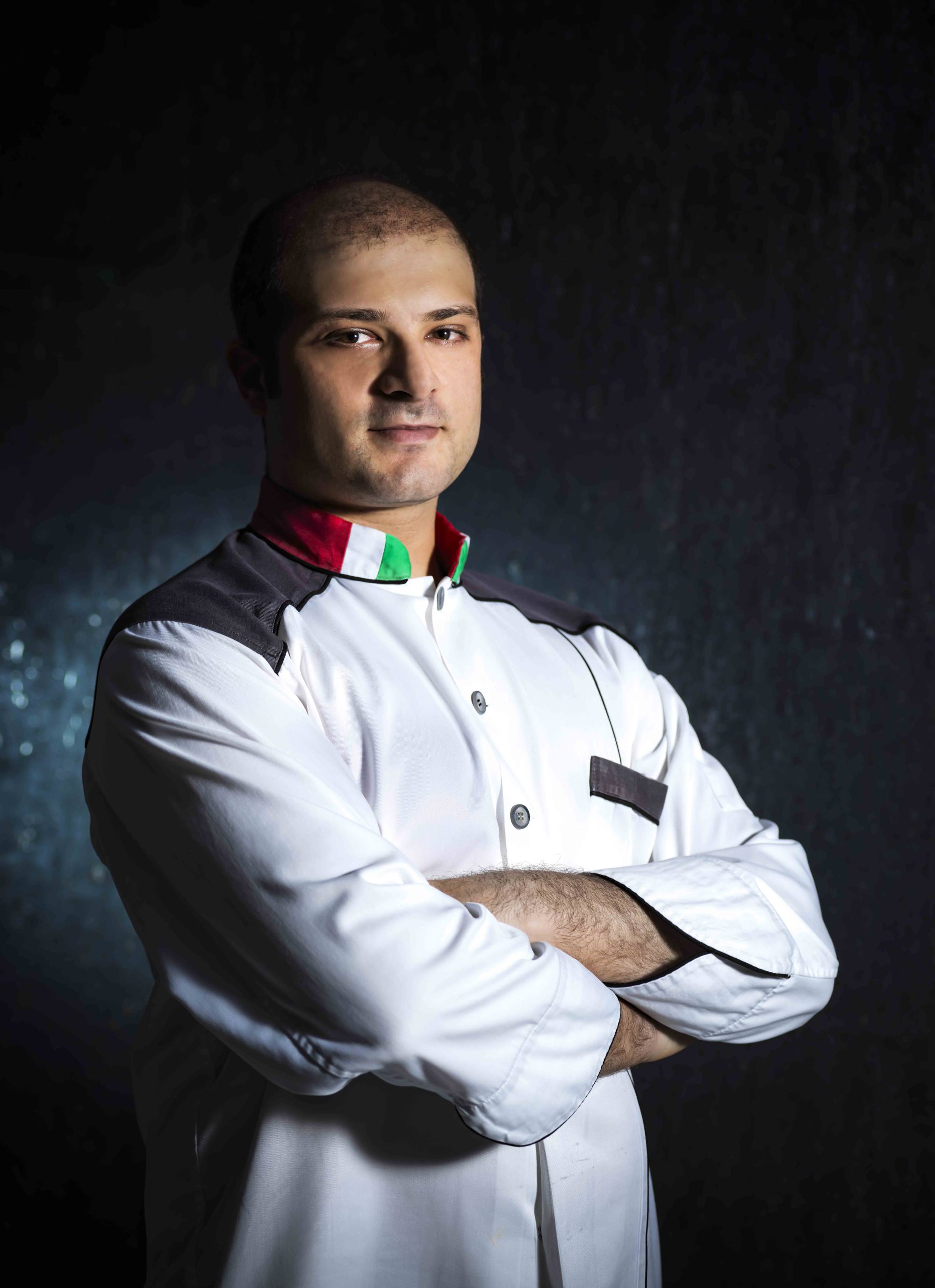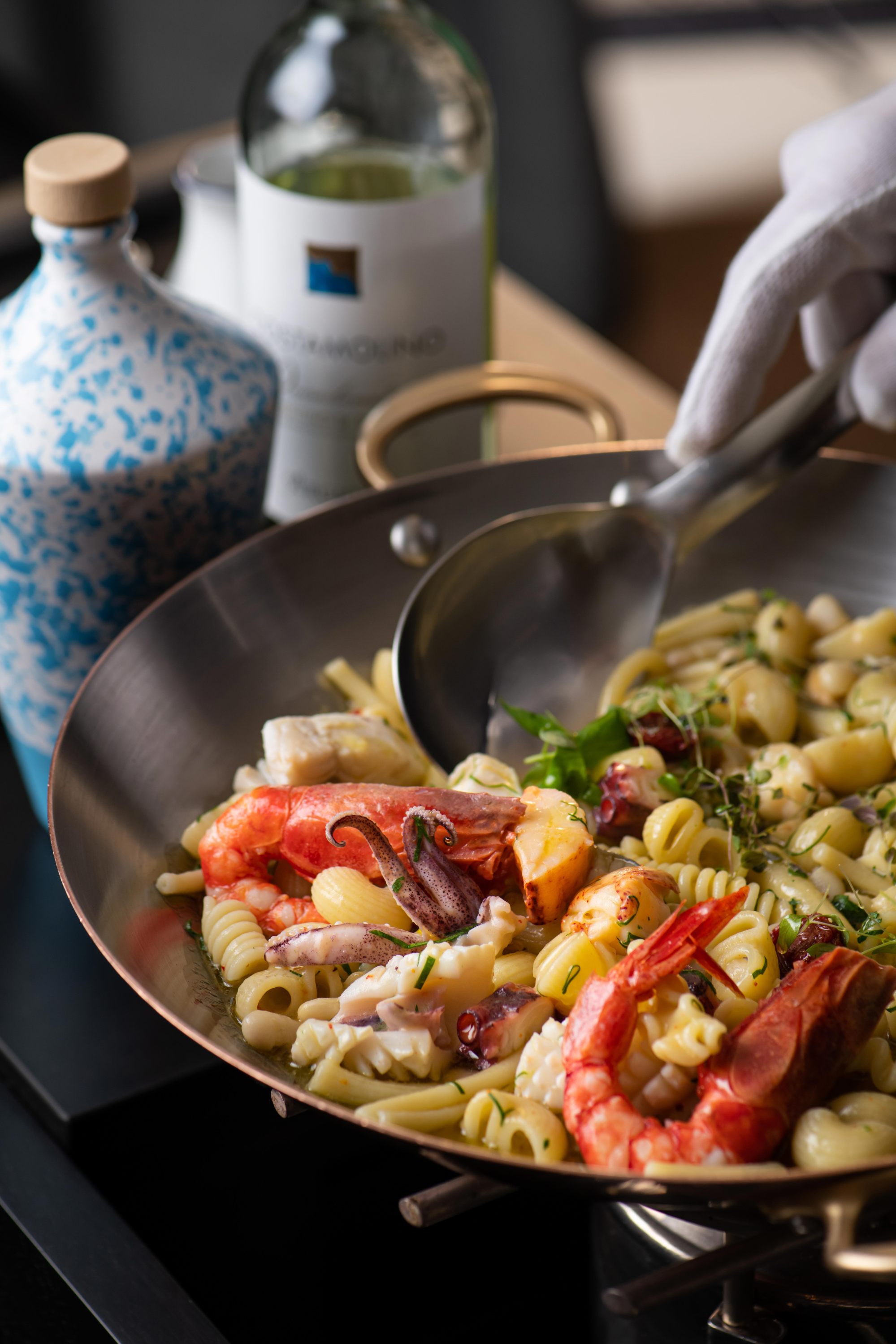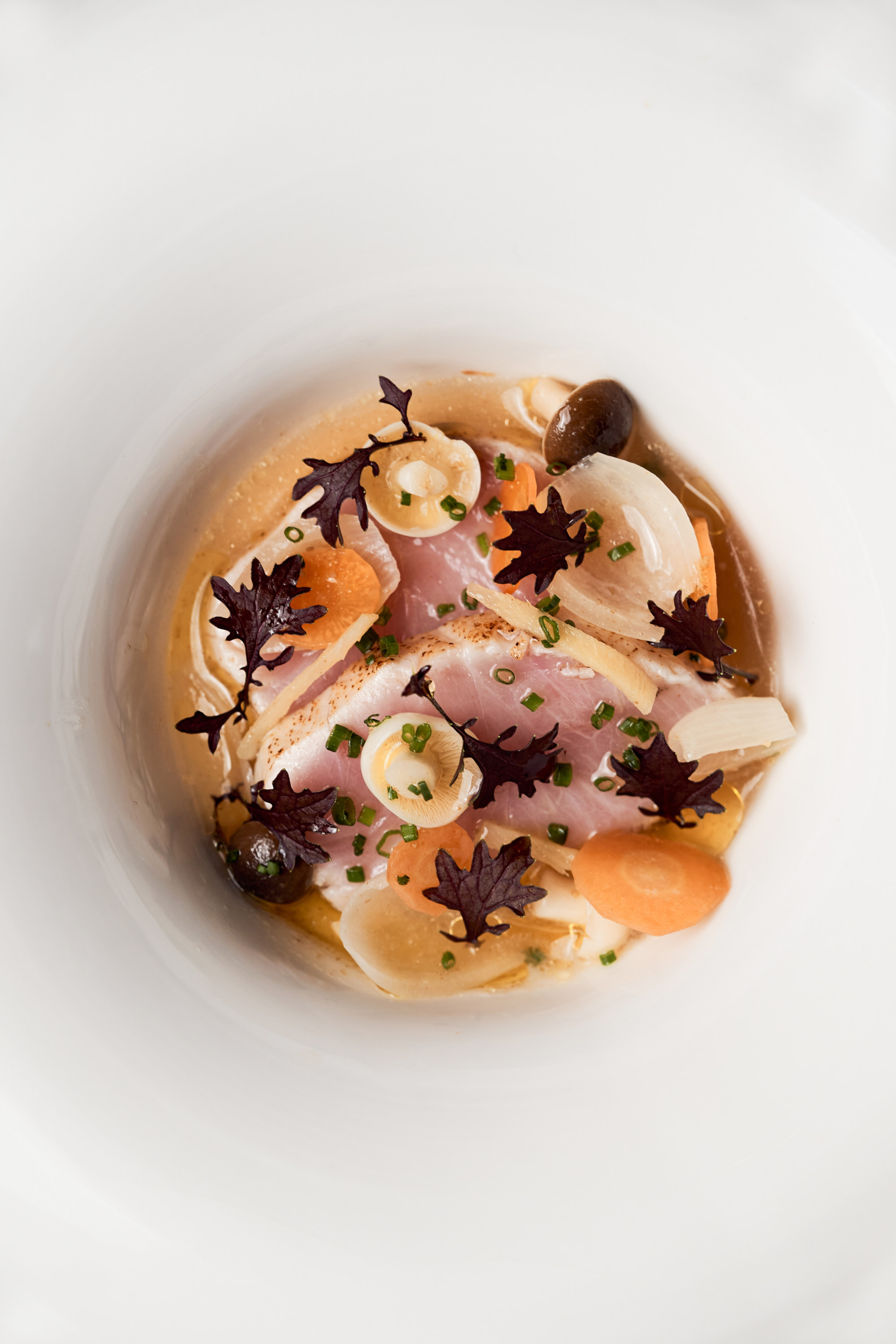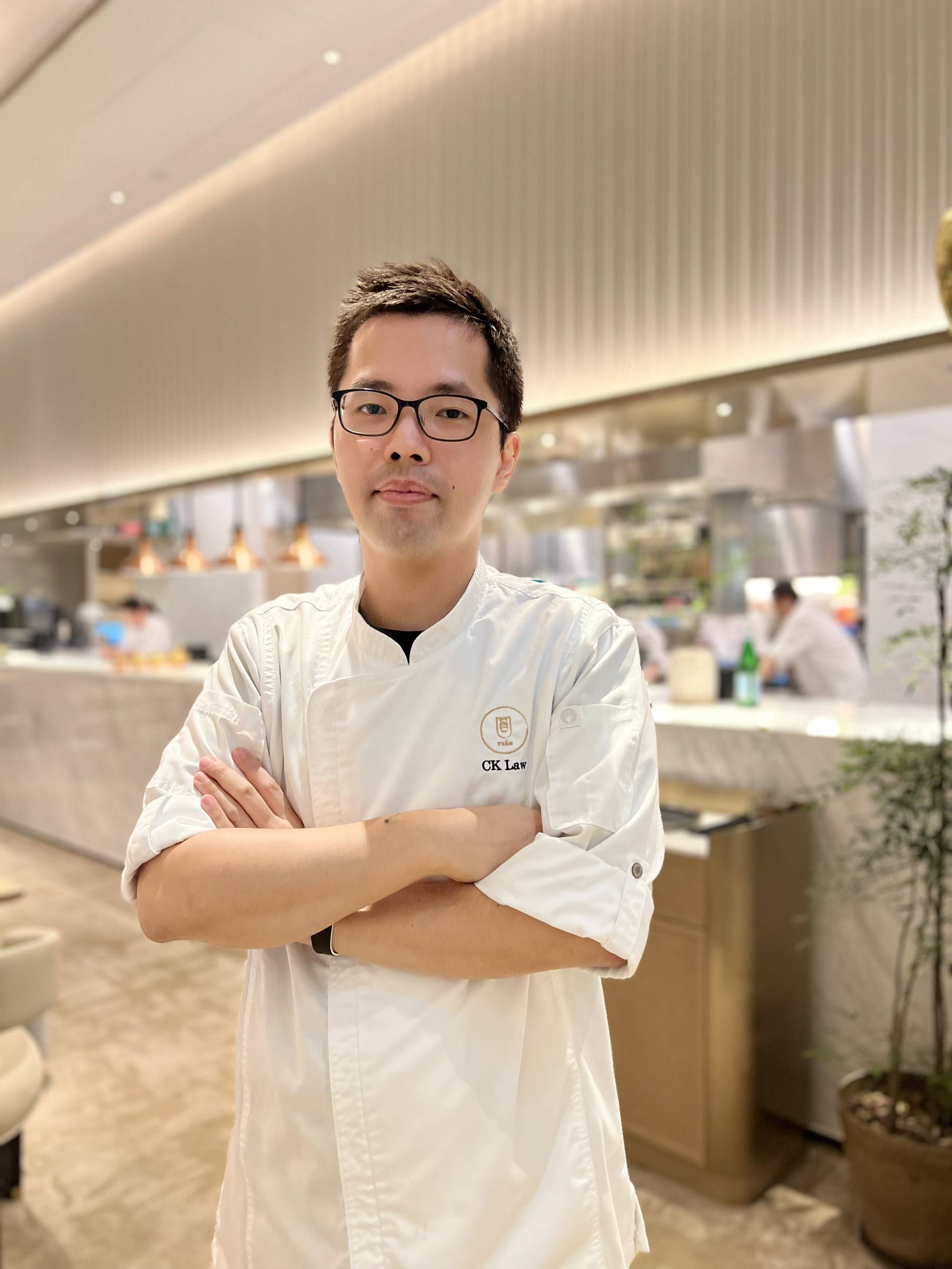House dishes inspired by chefs’ childhood favourites – Andō’s Agustin Balbi, Salisterra’s Cary Docherty, The Dining Room’s Giovanni Galeota, Grand Majestic Sichuan’s Theign Phan and Yuan’s Law Chak Kei offer recipes

Giovanni Galeota – The Dining Room, Rosewood Hong Kong
Mesca francesca ‘fagioli e frutti di mare’

This is a true masterpiece of Neapolitan cuisine, showcasing the best of the region’s seafood and culinary traditions. This dish also evokes fond memories of my childhood, as it was a staple for family celebrations and was often prepared by my grandmother and mother for Sunday lunch, which definitely holds a special place in my heart. To create this dish, I have followed the recipe left to me by my grandmother in a letter, by using the freshest seafood caught from the nearby Mediterranean Sea and Atlantic Ocean, and for the sauce: controne beans, one of the most delicious beans in Italy, renowned for their delightful sweetness and creamy texture.
At The Dining Room in Rosewood Hong Kong, I adjust the recipe slightly by using a mix of Japanese and Mediterranean seafood and showcase this memorable dish with table-side service – to give our guests the same feeling I had when it was served to me as a child.
Ingredients – white bean sauce
2.5 litres of water
500g white beans (soaked in water overnight)
40g pork cheek (guanciale)
50g carrot (brunoise)
50g celery (brunoise)
50g white onion (brunoise)
1 garlic clove
1 bouquet garni (typically containing parsley, thyme, bay leaf)
30g extra virgin olive oil
5g salt

Method
1. Finely chop the onions, carrots and celery to make a mirepoix.
2. In a large pot, combine 2.5 litres of water, the soaked beans, mirepoix and salt. Cook until the beans are soft. Then drain the beans and reserve the broth for the next step.
3. Sauté the pork guanciale in a pan with the olive oil, bouquet garni, garlic and vegetables until they become soft.
4. Add the cooked beans and cover with bean stock and some vegetable stock.
5. Cook for 25 minutes over medium heat, covered with parchment paper.
6. Remove the bouquet garni and garlic, then blend everything in a Vitamix or blender until smooth. This sauce will be used for cooking the pasta so make sure there’s not too much stock otherwise the sauce will be too runny.
Ingredients – seafood
Shallots
2 Sicilian red prawns
4 blue mussels
4 clams
4 small pieces of pre-boiled octopus
2 baby squid
2 small pieces of sea bass
260g mixed pasta (Pastificio Gentile recommended)
Basil
Parley
Chives
Chilli flakes
Method
1. Cook the pasta for 8 minutes until al dente, then transfer it to a pan with 2 spoonfuls of white bean sauce and a small ladle of seafood stock and white bean broth.
2. Cook for about 2-3 minutes over medium heat. Once the pasta looks creamy, turn off the heat and add the shallots, seafood and the heads of the red prawns. Stir gently until the fish is cooked to preserve the delicate texture and juices of the seafood.
3. Add chopped basil, parsley, chives, chilli flakes and some extra virgin olive oil.
Theign Phan – Grand Majestic Sichuan
White pepper pig’s stomach chicken soup

Throughout my childhood, my mother cooked dinner for our family almost every day – usually with a pot of nourishing soup to accompany our meal. This white pepper pig’s stomach chicken soup was one of my favourites. I love the flavour of white pepper combined with the texture of the pig stomach and finished off with the rich, savoury chicken broth. If any soup was left over, my mum would add napa cabbage and macaroni before packing it for me to take for lunch at primary school.
My mum would usually only cook this soup for special occasions. She would serve the whole chicken used to create the stock as a main with a side of soy sauce and then blanch seasonal vegetables in the soup to complete the meal. The sliced pig’s stomach was another main dish, and my father and I often fought to see who could get the most.
If memory serves me right, my family first had this soup together in a Chinese restaurant, and because we loved the taste so much, my mum taught herself to cook it at home. Looking back, I see a lot of her in the way I approach cooking now. I dine at restaurants, try new dishes and not only recreate them, but reimagine them to the best of my ability for our guests.
Ingredients
1 whole chicken (approx 1.5kg)
1 whole pig stomach
8 dried shiitake mushrooms
4 tbsp white peppercorns
4 tbsp grated ginger
1 knob of ginger – sliced
1 head of baby napa cabbage
3 stalks of spring onion
salt to taste
potato starch
Method
1. First, prepare the chicken stock by placing the whole chicken, ginger slices, and 2 tbsp of white peppercorns in a pot, cover with cold water and bring to a boil. Once boiling, lower heat and continue to slow boil for 1.5-2 hours. Remove the chicken from the stock once completed, and discard or consume as you wish.
2. While the stock is slowly boiling, clean the pig stomach by rubbing salt all over it for a few minutes. Rinse away the salt and flip the stomach inside out. Again, clean the inside of the pig stomach by rubbing salt all over, but this time with potato starch as well. Rinse and repeat as many times as necessary to remove the strong organ smell. Once the smell is gone, use a small knife to trim away any excess fat.
3. Flip the pig stomach back to its original form and stuff the inside with the remaining 2 tbsp of white peppercorns and 4 tbsp of grated ginger. Use a few toothpicks to stitch the opening closed.
4. Prepare the dried shiitake mushrooms by soaking them in hot water to rehydrate. Once rehydrated and softened, cut away the woody stems.
5. Place the stitched pig stomach and rehydrated shiitake mushrooms into the chicken stock and boil on medium heat for 45-60 minutes (or until the pig stomach is soft).
6. Once the pig stomach softens, reduce the heat, remove it from the stock, remove the toothpicks and slice into 1cm-wide strips. Put the strips back into the stock and bring to a boil.
7. Once boiling, add the napa cabbage slices to the pot and cook for about 1 minute.
8. Season with salt to taste.
9. Portion into small bowls and top with chopped spring onions before serving.
Agustin Balbi – Andō
Hamachi escabeche
Hamachi escabeche is an innovative take on a dish that my aunt Ñeca used to make. In summer holidays, my grandmother Lola would take me to Carlos Casares, a few hundred kilometres from Buenos Aires, to go visit my aunt there, where the family has fields to grow cattle and grains.
One very common practice there was to hunt quail and we would go with my cousin in the afternoons to hunt together, making escabeche de codorniz to preserve them and add flavour. Based on that traditional flavour and technique – and in a way to honour her – I did this dish, but of course in my own style. I changed the quail to high-quality hamachi and added ginger and dashi as a base to elevate the umami in it. We also cook it with purple carrots to have a very special visual effect, creating a very refreshing dish to start a meal with.
Ingredients – escabeche
-
350g white vinegar
-
350g kombu dashi
-
2 tbsp cumin powder
-
125g olive oil
-
2 bay leaves
-
15g crushed black pepper
-
10g salt
-
50g sugar
-
Juice from 2 limes
-
200g baby carrots
-
30 pearl onions
-
3 packs of white shimeji mushrooms
-
3 packs of brown shimeji mushrooms
-
20g ginger
-
3 heirloom baby carrots (one of each colour)
Method
1. Peel the heirloom carrots and with the help of a mandolin slice them into rounds, being very careful. Separate by colour, do not mix.
2. In a medium pot, mix the kombu dashi, vinegar, cumin, bay leaves, black pepper, salt, sugar, lemon juice and ginger, and bring to a simmer over low heat.
3. In a second pot, mix the peeled pearl onions, carrots (leave the purple ones separate) and shimeji mushroom heads, and when the liquid from the previous step reaches boiling point, pour most of it over the vegetables and leave it at room temperature.
4. Save a little of the liquid and add it to the purple carrots, to produce a liquid with a lively violet tone.
Ingredients – hamachi
-
1 fillet of hamachi
-
4 tbsp seaweed salt
-
2 pieces of kombu seaweed

Method
1. Separate the belly from the loin of the hamachi fillet, cleaning up any blood.
2. Place it on a resting rack, sprinkle with seaweed salt and put in the fridge for minimum 2 hours.
3. Take out and rinse the hamachi with iced water. Dry very well.
4. Place on a tray with the kombu and let it rest in the fridge again for another 6 hours.
5. Remove and with the help of a piece of very hot charcoal, sear the surface of the fish. Slice with a very sharp knife.
6. Place 3 slices of the hamachi on a plate and arrange the carrot slices, pieces of ginger, shimeji mushroom heads and pearl onion petals.
7. Add salt, drops of great quality olive oil and 2 tbsp of the escabeche liquid to the fish and finish with lime zest.
Cary Docherty – Salisterra, The Upper House
Butter tarts

My mother Elizabeth is an amazing cook and great baker. My sister Ashley and I used to spend time with her in the kitchen when we were young, helping with the little jobs like cracking eggs, rolling dough, cutting out biscuits and mixing icing. In hindsight, that time preparing, cooking and sharing with friends was influential in shaping my food philosophy. I learned at an early age about the joy of preparing and enjoying treats with loved ones.
The butter tart is one of the dishes I most associate with my mum and home, something we made together at Christmas for many years. My wife Jennifer, an amazing cook and baker in her own right, started making butter tarts when we couldn’t make it to Canada for Christmas – it was the perfect taste of home and transported us there.
I wanted to share this little-known Canadian treat with the rest of world. Our Salisterra recipe merges Jennifer’s filling with my mum’s dough, the perfect combination from my two favourite people in the world.
Ingredients – pastry
750g plain flour
3 tbs brown sugar
1/2 tsp baking powder
1 tsp salt
450g lard, cold
1 egg
3 tbs vinegar
1 lime
Ingredients – filling
525g brown sugar
220g butter, melted
2 tsp vanilla essence
3 eggs
115g fine breadcrumbs
240g cereal cream
200g raisins

Method
1. Combine the flour, 3 tablespoons sugar, baking powder and salt.
2. Cut the lard into tiny pieces and mix into the flour mixture. Do not overwork the pastry.
3. Mix an egg and vinegar in a measuring jug.
4. Fill the jug with 230ml of ice-cold water and pour over the flour mixture. Combine carefully, without overworking.
5. Combine the 525g sugar, butter, vanilla and remaining eggs.
6. Soak the breadcrumbs in the cream and add to the mixture.
7. Roll out the pastry and line tart tins, placing raisins in each.
8. Fill 3/4 with the filling. Bake at 200°C for 18 to 20 minutes.
Law Chak Kei – Yuan
Matsuke chrysanthemum tofu soup

In my childhood, my family had a preference for dining out rather than cooking at home. While we didn’t often visit Cantonese restaurants, we went to places that served Northern Chinese cuisine. I remember finding it so exciting to explore the different flavours and dishes offered at these restaurants and I have very fond memories of sharing meals with my family. It was through these experiences that I got to try chrysanthemum tofu, a speciality of Huaiyang cuisine, often served in the form of soup or ginger tea. It is a type of tofu that undergoes intricate carving, resulting in soft and tender strands that resemble the exquisite beauty of a blooming chrysanthemum. As a child, I found this process incredibly fascinating, though I had no idea of how the chefs achieved such artistry. These cherished experiences with food eventually fuelled my career as a chef and inspired me to create the matsutake chrysanthemum tofu soup for Yuan.
Ingredients
matsutake mushrooms
golden chanterelle mushrooms
shiitake mushrooms
soft tofu
salt
coriander
goji berries

Method
-
Prepare three separate soup bases: one with matsutake mushroom slices, one with golden chanterelle mushrooms, and one with dried shiitake mushrooms. Stew each for 2 hours until fragrant. Avoid overcooking to maintain the clarity of the broth.
-
Combine the soup bases, ensuring the flavours are balanced.
-
Separately, cut soft tofu in a tight-knit criss-cross pattern so that it resembles a chrysanthemum flower and can shorten the cooking time, resulting in a soft and tender texture.
-
Steam the tofu for three minutes, using water and a bit of salt for seasoning.
-
Place the tofu in the soup when plating and garnish with coriander and goji berry.

- Dishes at some of Hong Kong best restaurants include earthy family recipes like Neapolitan mesca francesca and Chinese white pepper pig’s stomach chicken soup
- Refined versions of matsuke chrysanthemum tofu soup, hamachi escabeche and butter tarts all started out as beloved family favourites